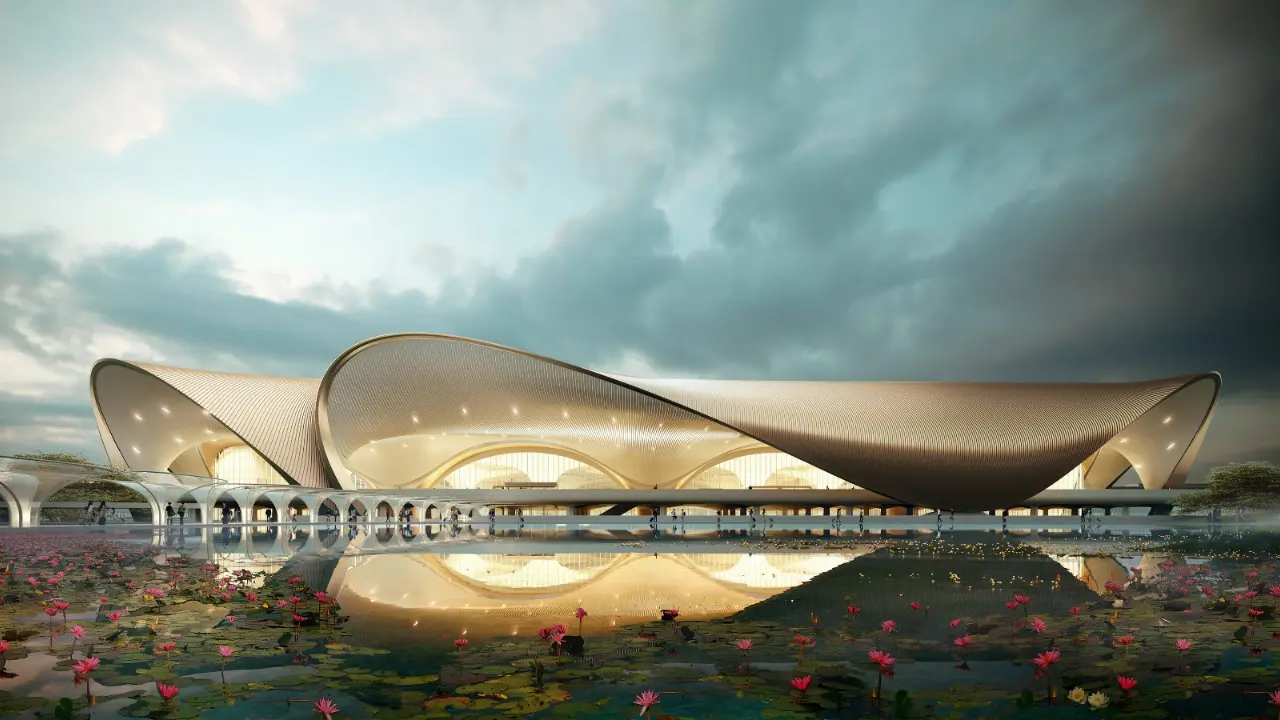The late 2000s witnessed a rise in Indian-origin global figures. In 2007, the Bombay Stock Exchange (BSE) Sensex crossed the 20,000 mark for the first time, underscoring India’s booming economy. Global investors intensified interest in India as an emerging-market powerhouse. For Mumbai, India’s financial capital, this was a golden opportunity. Yet, aviation planners realised one pressing issue—Chhatrapati Shivaji Maharaj International Airport (CSMIA) was nearing operational limits. The goal was clear: relieve congestion at CSMIA and prepare Mumbai for surging passenger demand.
2011–2017: Navigating Clearances and Challenges
If the late 2000s were about dreaming big, the next decade was about facing ground realities. Between 2011 and 2017, the City and Industrial Development Corporation (CIDCO), the nodal agency, managed one of India’s most complex rehabilitation and resettlement exercises. Families from Panvel and Ulwe were relocated, compensated, and integrated into new housing clusters. Engineers redesigned drainage systems and river diversions to safeguard wetlands and prevent flooding. Multiple ministries conducted protracted reviews and clearance processes. Each approval became a milestone won through persistence.
2018: The Risks and Rewards
By 2018, the groundwork was ready for CIDCO to float tenders for a private partner. The stakes were high—the project cost over Rs 16,700 crore, making NMIA one of India’s most expensive public–private partnerships (PPPs). The tender process highlighted both the risks and rewards. NMIA was not just another airport; it was a chance to shape Mumbai’s future as a global aviation hub.
2019–2021: Land in Sight, Operator in Place
In 2019, a major breakthrough came as all significant land acquisition was completed, signalling certainty for private operators. In August 2021, the Adani Group, one of India’s leading infrastructure companies, formally took over the project. With Adani also managing CSMIA, Mumbai’s twin-airport system gained a single operator, ensuring synergy rather than rivalry. This clarity unlocked new momentum for the project.
2023: Bold Design, Visible Progress
By mid-2023, construction crossed 50 per cent completion—a visible sign of acceleration. The global design pedigree became clear when London-based Zaha Hadid Architects revealed terminal renderings. Inspired by India’s national flower—the Lotus—the terminal blends striking aesthetics with operational intelligence. NMIA is also India’s first 100 per cent green airport from day one, setting benchmarks in sustainability.
2025: Countdown to Inauguration
According to sources, NMIA is set to inaugurate on 30 September 2025, though an official date is yet to be announced. In its first phase, the airport will handle 20 million passengers annually and 0.5 million tonnes of cargo. Strategically, it positions Mumbai alongside twin-airport cities like London, Dubai, and New York, where multiple airports spread demand, encourage competition, and foster growth. Economically, NMIA is expected to generate tens of thousands of jobs, catalyse new businesses in Navi Mumbai, and strengthen India’s role in global trade and travel.
As the first passengers prepare to check in, NMIA represents more than an airport—it is Mumbai’s promise to the world. What began as a blueprint in 2007 has become a landmark of resilience, design, and ambition. From ecological hurdles to bold engineering, the journey has been as dramatic as the city it will serve. When the runways finally light up, it will not just mark an inauguration—it will mark Mumbai’s take-off into a new era of global aviation.
Timeline:
2007: Seeds of a second airport
Union Cabinet approves a greenfield airport in Navi Mumbai to ease congestion at CSMIA.
2011–2017: Clearances & Challenges
Environmental approvals, mangrove and river safeguards and resettlement of thousands of families delay progress.
2018: Tendering begins
CIDCO floats bids for private participation in one of India’s most ambitious PPP projects, pegged at ₹16,700 crore.
2019–2021: Operator in place
Major land acquisition in 2019. In August 2021, the Adani Group takes charge, gaining control of both CSMIA and NMIA. Construction starts in earnest.
2022: Land handover, Full construction
CIDCO hands over 2,866 acres to Adani Airport Holdings Ltd. Heavy machinery moves in, runways and terminal foundations take shape.
2023: Design unveiled, work at speed
Construction crosses 50%. Zaha Hadid’s lotus-inspired terminal design revealed, balancing aesthetics with efficiency.
2024: First touchdowns
October: Indian Air Force C-295 completes first test landing.
December: IndiGo runs a validation flight, confirming operational readiness.
2025: Countdown to inauguration
By July, work is 94% complete. Final safety checks and passenger-flow simulations underway.
30 September 2025: Formal inauguration of the state-of-the-art facility.
Inauguration date: September 30, 2025
Area: 1,160 hectares (2,866 acres)
Passenger capacity: 20 million annually
Cargo capacity: 0.5 million tonnes
Runways: 1 operational in Phase 1
Design: Lotus-inspired terminal by Zaha Hadid Architects, London
Investment: Rs 16,700 crore (estimated)











